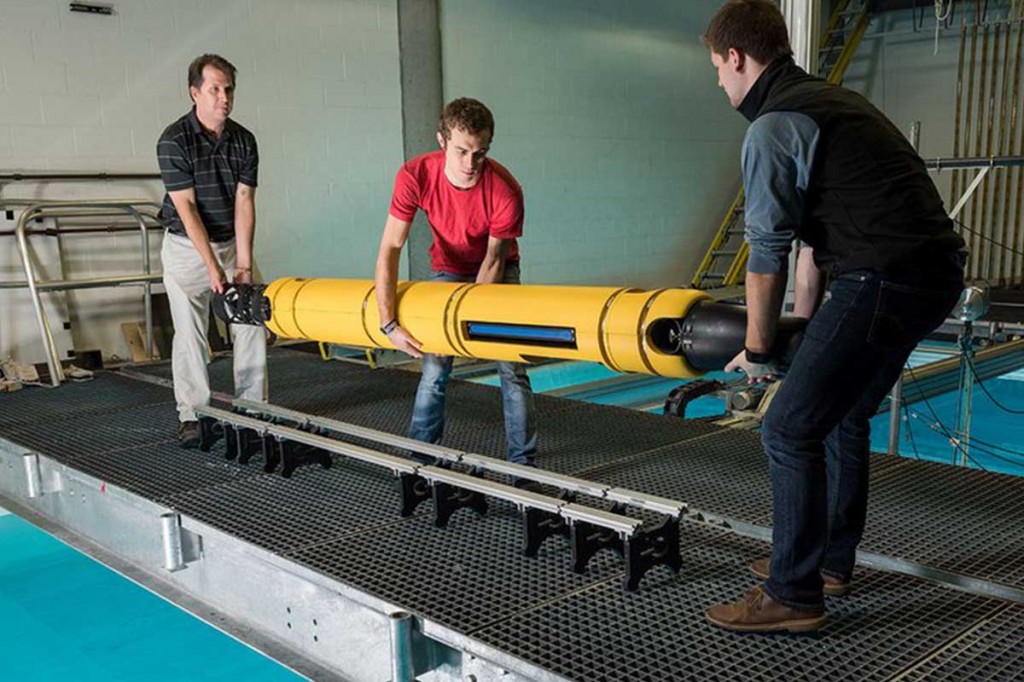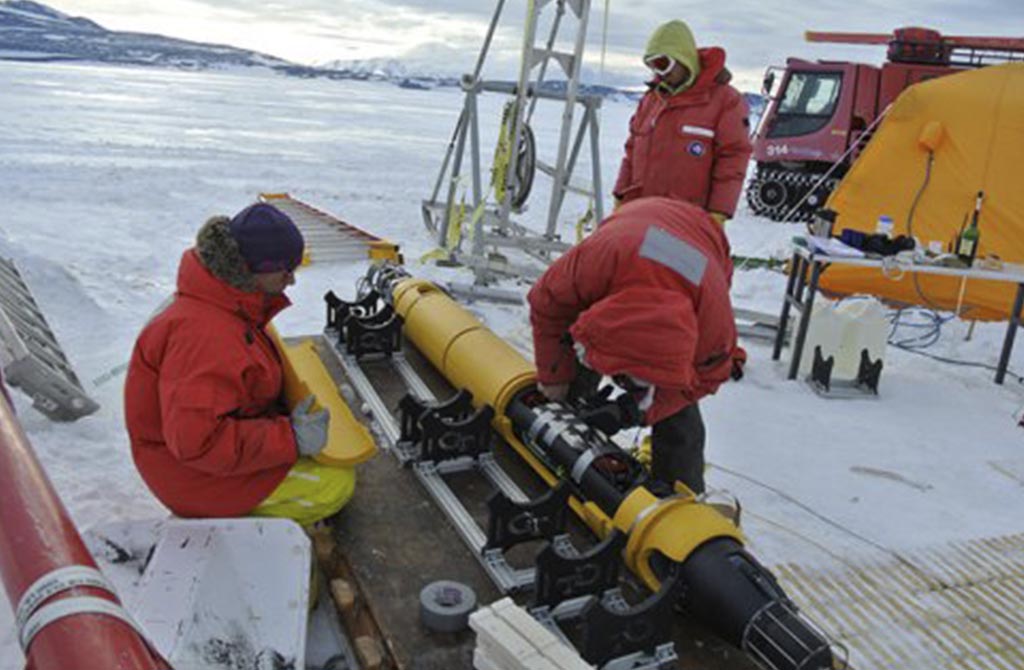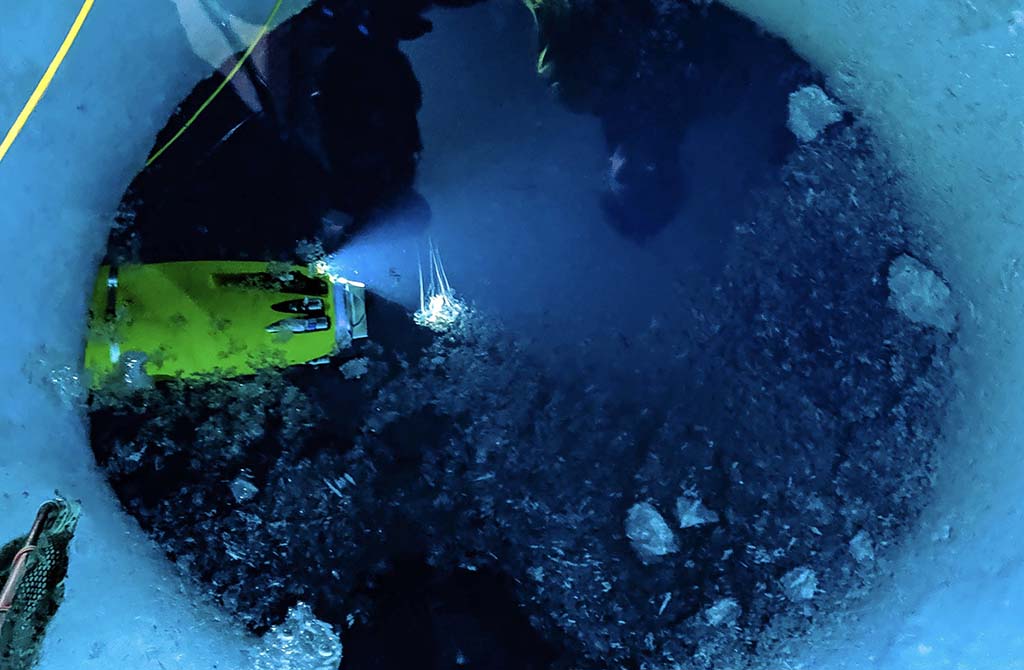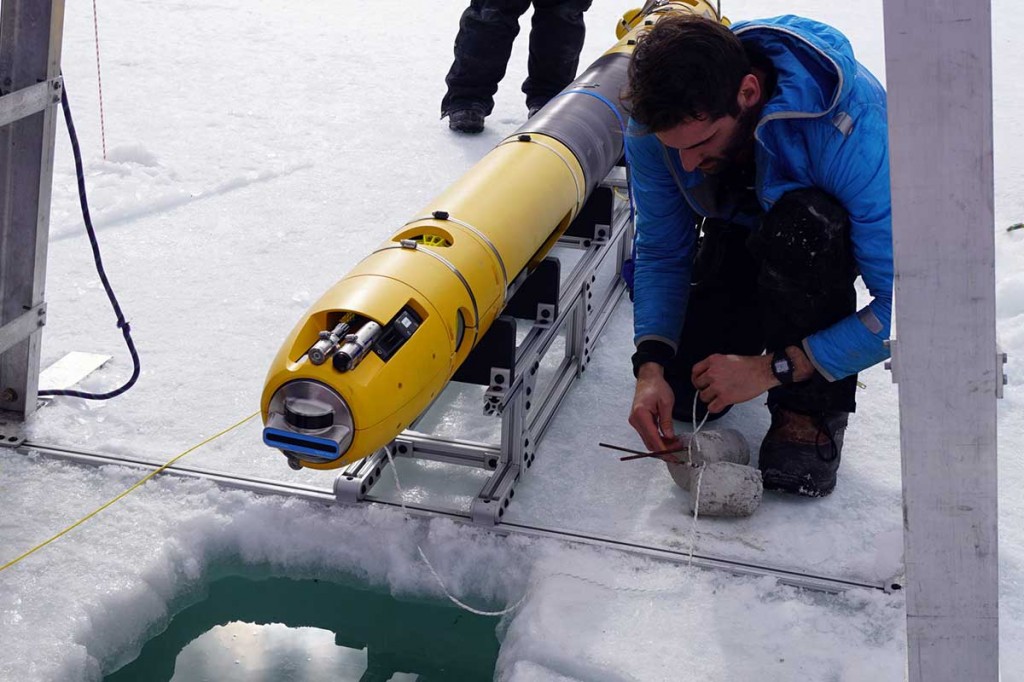April 17, 2020
The first video of the under-ice world of Antarctica filmed by a robotic submarine probe
What is on the ocean floor of Antarctica? Are these icy waters inhabited? How does global warming affect them? The answers to these questions are known by Icefin-a robot drone created specifically for deep dives.
How Icefin was born?
In 2015, scientists began working on a device that would help study the ocean floor under Antarctica in detail. This was not the first experience of this kind, but previous work did not give an accurate picture. They were either compact probes with a single camera, or large devices placed on the edge of the ice shelf.
Icefin is a hybrid of sorts. Compact and mobile, it can be used both modularly and independently. The robot is equipped with a variety of sensors, the position of which can be freely controlled. This allows you to get the most accurate 3D image of the ocean floor. The creators of Icefin themselves compare it with modern spacecraft. And no wonder: the robot was created with the support of the Planetary-analog Ecosystem (SIMPLE) – an organization sponsored by NASA. In the future, the technologies used for the probe will be used to search for life on other planets. For example, on Europa, the moon of Jupiter, covered with ice.
The creators of Icefin themselves compare it with modern spacecraft. And no wonder: the robot was created with the support of the Planetary-analog Ecosystem (SIMPLE) – an organization sponsored by NASA. In the future, the technologies used for the probe will be used to search for life on other planets. For example, on Europa, the moon of Jupiter, covered with ice. It took only a year to create the unmanned probe. Despite the fact that such projects have been developed for at least 2-3 years, and in the course of work, scientists had to face serious problems. The main one was the critically low temperatures of the Antarctic seas. Scientists feared that the frost would damage Icefin's electronic systems. For the first swim, protocols were developed for various critical situations. But the robot passed all the tests with honor.
It took only a year to create the unmanned probe. Despite the fact that such projects have been developed for at least 2-3 years, and in the course of work, scientists had to face serious problems. The main one was the critically low temperatures of the Antarctic seas. Scientists feared that the frost would damage Icefin's electronic systems. For the first swim, protocols were developed for various critical situations. But the robot passed all the tests with honor. Another problem was the inability to use traditional GPS: it simply does not work under the ice. Therefore, Icefin uses the SLAM (simultaneous localization and mapping) navigation system to triangulate the position based on distance measurement and characterization on the sea floor or under ice.
Another problem was the inability to use traditional GPS: it simply does not work under the ice. Therefore, Icefin uses the SLAM (simultaneous localization and mapping) navigation system to triangulate the position based on distance measurement and characterization on the sea floor or under ice.
What Icefin told You about?
Testing of the hybrid robot began in 2015. Then Icefin sank under the Ross ice shelf in Antarctica. Scientists drilled a 12-inch hole through 20 meters of ice. We managed to descend to 500 m and capture a unique picture of the underwater world. As well as local inhabitants who do not care for icy water: sea sponges and stars, anemones.
Subsequently, Icefin made more than one swim. Currently, the robot is actively used to study underwater Biosystems, as well as the state of polar ice. So, the recent dive of Icefin under the Thwaites glacier showed that global warming affects the state of Antarctica much more than expected.
So, the recent dive of Icefin under the Thwaites glacier showed that global warming affects the state of Antarctica much more than expected.
The Thwaites glacier is also known as the Glacier the day of judgment. It received such a formidable name because of its instability. The glacier extends significantly beyond the ground line (the border where the bottom of the glacier collides with water and earth). And with its rapid melting, it can provoke a rise in the world's ocean by 64 cm, which will destroy coastal regions throughout the Earth. Unfortunately, the scientists gloomy predictions about the doomsday Glacier were confirmed. Icefin swam 15 km along the ground line and shot an impressive video. On it you can see a lot of potholes and furrows that appeared due to the friction of the glacier on the ground. Scientists associate this condition with an increase in water temperature, which accelerates the melting of ice.
Unfortunately, the scientists gloomy predictions about the doomsday Glacier were confirmed. Icefin swam 15 km along the ground line and shot an impressive video. On it you can see a lot of potholes and furrows that appeared due to the friction of the glacier on the ground. Scientists associate this condition with an increase in water temperature, which accelerates the melting of ice.
How the situation will develop is still unknown. Scientists continue to monitor this and other glaciers. This means that Icefin will have more than one dive.
Read more
July 31, 2024
April 12, 2024
April 5, 2024